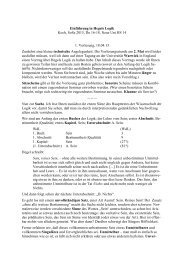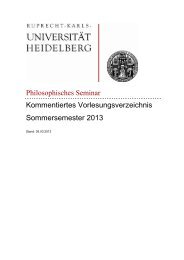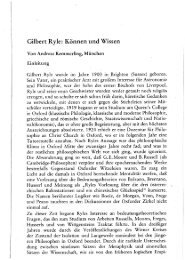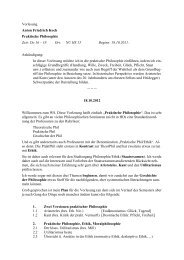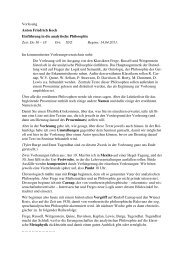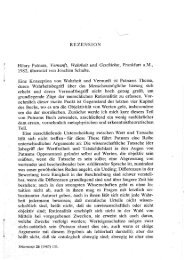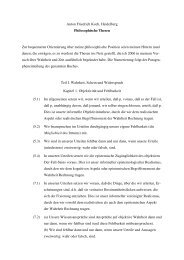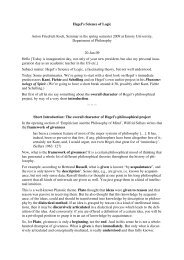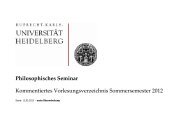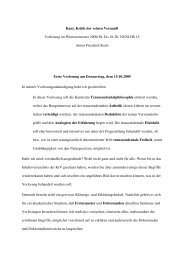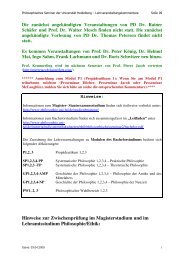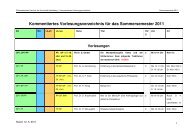KANT'S CRITIQUE OF TELEOLOGY IN BIOLOGICAL EXPLANATION
KANT'S CRITIQUE OF TELEOLOGY IN BIOLOGICAL EXPLANATION
KANT'S CRITIQUE OF TELEOLOGY IN BIOLOGICAL EXPLANATION
Create successful ePaper yourself
Turn your PDF publications into a flip-book with our unique Google optimized e-Paper software.
42 Analytic of Teleological Judgment<br />
character on the example of an organism, pointing "for example, to<br />
the structure of birds regarding how their bones are hollow, how<br />
their wings are positioned to produce motion and their tails to permit<br />
steering and so on" (B268f; CJ, 236). There seems to be no reason<br />
why nature as a mere mechanism should have chosen precisely<br />
this composition of parts instead of thousands of other possible combinations<br />
of the parts; without recourse to the causality of purpose,<br />
this structure must appear "utterly contingent". Thus wherever<br />
particular phenomena seem to be underdetermined (accidental) by<br />
"mere mechanism," we introduce objective purposiveness as a<br />
regulative principle. We view the phenomenon as if a concept of the<br />
phenomenon had guided its production.<br />
For we adduce a teleological basis when we attribute to the concept of an<br />
object — just as if that concept were in nature (not in us) — a causality concerning<br />
an object, or, rather, when we conceive of the object's possibility by<br />
analogy with such a causality (which we find in ourselves) and so think nature<br />
as technical in what it itself can do. (§ 61, B269-70; CJ, 237)<br />
Kant emphasizes that we may not consider such teleological<br />
grounds to be real causes (but only "Erkenntnisgründe" as he later<br />
elaborates); their postulation is a regulative principle.<br />
First (§62), Kant divides objective purposiveness into a formal<br />
and a material version. His examples of formal purposiveness are<br />
all taken from mathematics: geometric figures such as conic sections<br />
are "fertile in principles for solving a multitude of possible<br />
problems" (B272; CJ, 240). Such "objects" of our formal intuition can<br />
be unexpectedly useful with regard to other objects of our formal<br />
intuition. But this kind of purposiveness plays no role in the subsequent<br />
analysis.<br />
Much more important than the formal, however, is the material<br />
purposiveness, which has to do with real objects of material<br />
reality. Kant distinguishes (§63) a relative (extrinsic) and an intrinsic<br />
(absolute) purposiveness. 30 Experience prompts us to introduce<br />
the concept of material purposiveness only when we have to deal<br />
with particular objects whose explanation causes us particular<br />
problems. With certain particularly complicated systems we may<br />
assume a relative purposiveness of one part for another in order to<br />
facilitate the investigation of the interrelationships; with some<br />
objects, on the other hand, we must assume an intrinsic purposive-<br />
30 Intrinsic purposiveness is also called "absolute" only in the so-called "First<br />
Introduction," Ak 20,217; W 5,194; CJ, 405.



